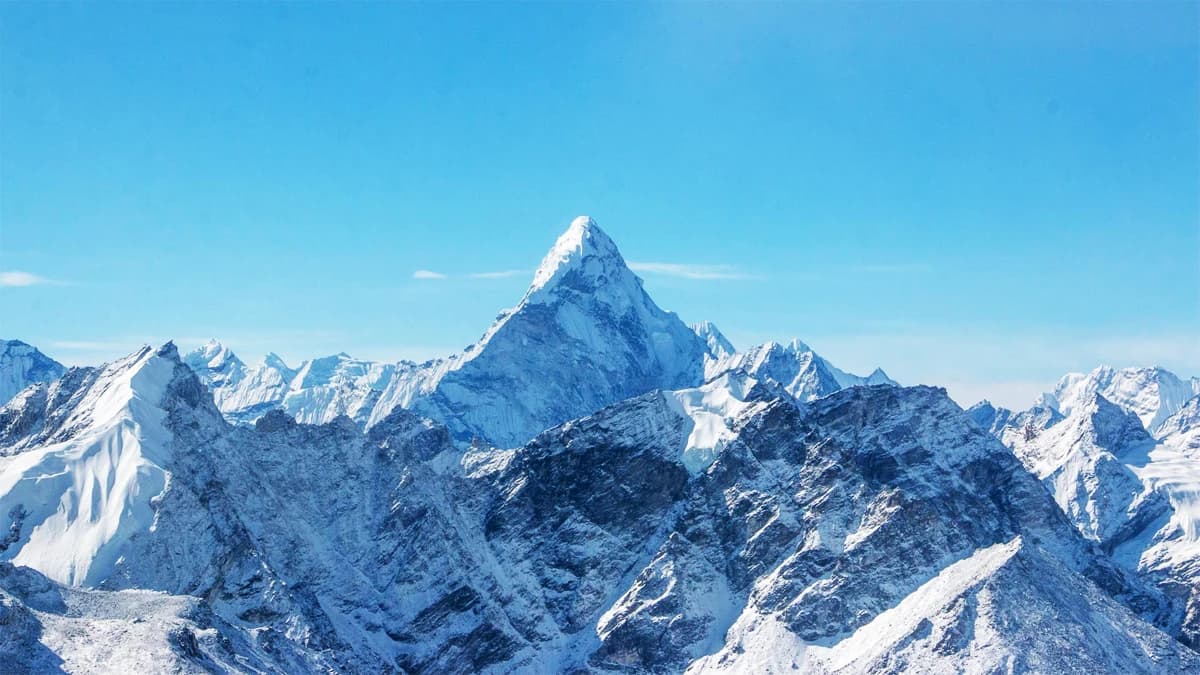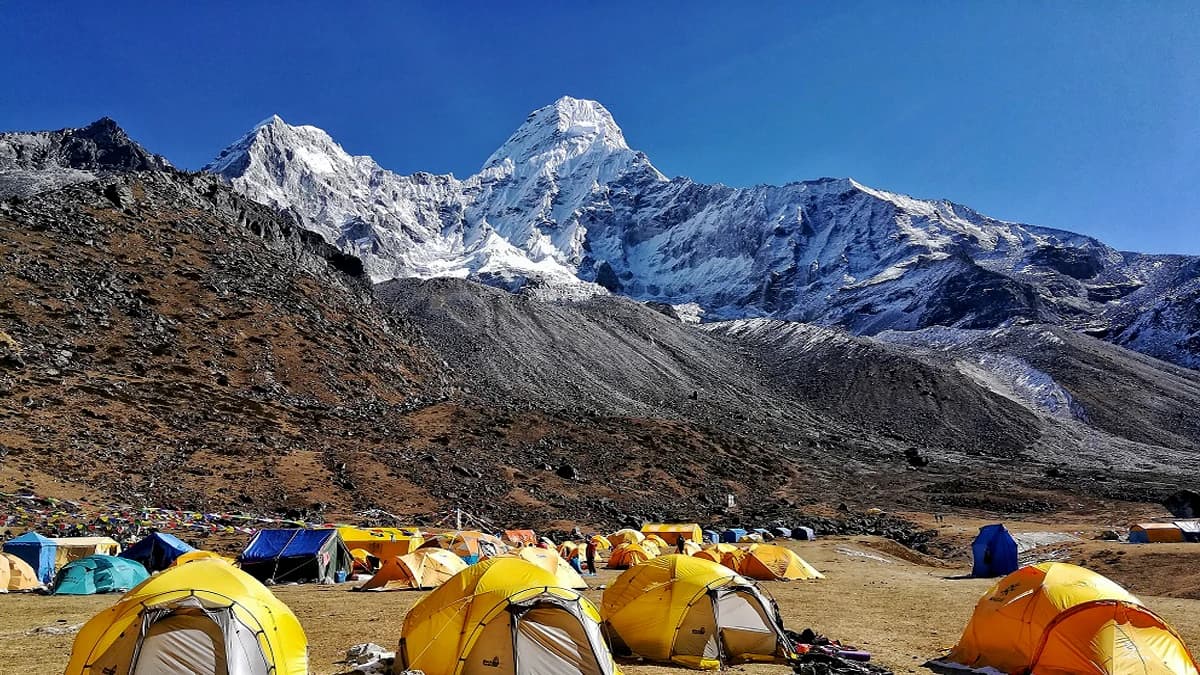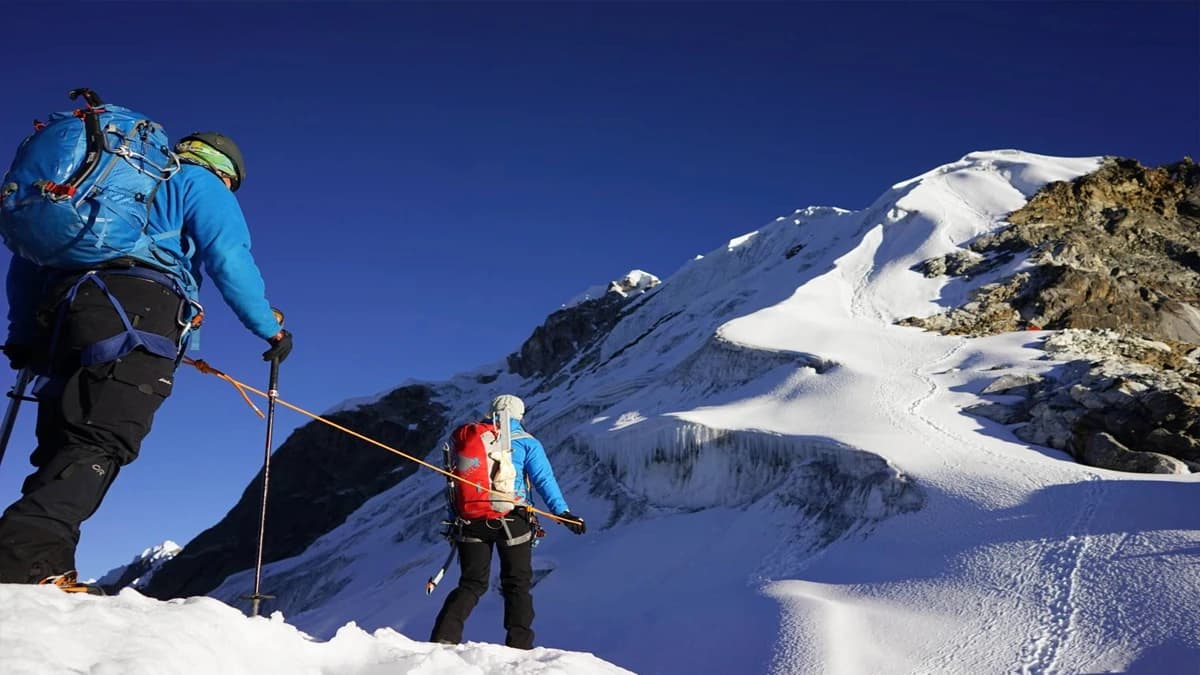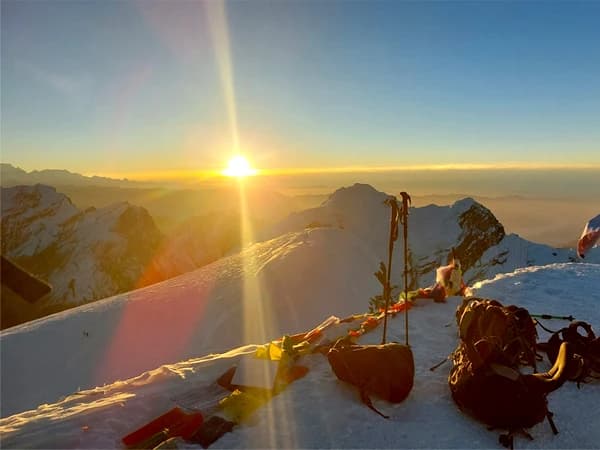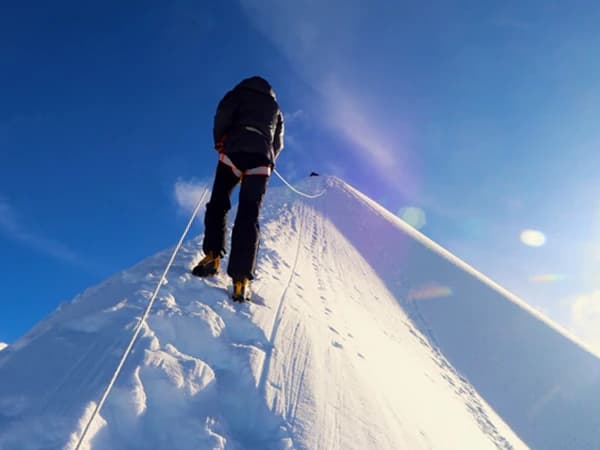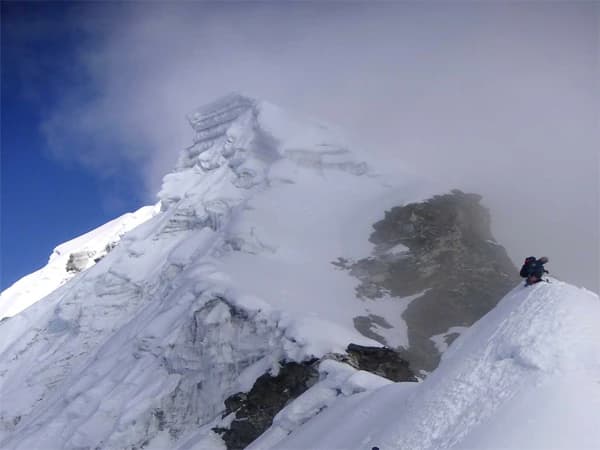Ama Dablam Expedition
Mt. Ama Dablam is widely regarded as one of the most stunning mountains globally, attracting alpinists and climbers alike due to its formidable terrain and distinctive pyramid shape, which draws numerous adventurers each year. In Sagarmatha National Park within the Mahalangur Himalayan Range, Mt. Ama Dablam is among Nepal's top three climbing destinations, just a few kilometers south of Mt. Everest (8848.68m), often referred to as the Matterhorn of the Himalayas because of its unique position and silhouette, Ama Dablam rises to an impressive height of 6812m above sea level, adjacent to the Imja Valley and surrounded by breathtaking peaks. Ama Dablam is interpreted as "mother's necklace." The mountain's elongated ridges resemble a mother's arms (ama) embracing her child. At the same time, the glacier that hangs from the summit is compared to the Dablam, a traditional double-pendant featuring images of deities, commonly worn by Sherpa women. This mountain stands out as the most significant landmark during treks in the Everest region, located on the right side of the Everest Base Camp Trek route. It rises from the glacial river to its peak, and the mountain's views can be enjoyed from various Sherpa villages, including Kyangjuma, Tengboche, Pangboche, Samare, and Dingboche, among others. The first successful ascent of Ama Dablam Mountain occurred on March 13, 1961, following an initial attempt led by Alfred Gregory in 1958. The Ama Dablam expedition allows climbers to tackle moderately technical yet accessible terrain comprising snow, ice, and rock, all set against breathtaking views of the Himalayas. With enjoyable and secure climbing on solid rock and mixed routes, this expedition is ideal for climbers of all skill levels, from beginners to experts. The upper camps on Ama Dablam are famous for their dramatic exposure, making this mountain a sought-after destination for both novice and seasoned climbers. Join the Himalayan Trekking Path company for an unforgettable Ama Dablam Expedition, creating experiences and memories that will last a lifetime.
Ama Dablam Expedition Highlights
- Ama Dablam, soaring to 6,812 meters, is one of the most iconic peaks in the Himalayas, often referred to as the "Matterhorn of the Himalayas."
- The standard route, known as the Southwest Ridge, requires advanced mountaineering skills for rock climbing, ice, and mixed terrain.
- The Amadablam Peak climbing package offers a comprehensive range of services from your arrival to departure.
- Discover the hidden gems of Kathmandu before your journey to Lukla.
- Enjoy a scenic flight that connects Kathmandu and Lukla before embarking on your Amadablam Peak adventure.
- Immerse yourself in the culture and lifestyle of the Sherpa people.
- Experience diverse climates along with a variety of flora and fauna.
- Benefit from an exceptional trekking and climbing experience.
- Explore ancient monasteries and the rich local culture.
- Cross a suspension bridge spanning the glacial river.
- Navigate challenging terrain that includes ice and rock formations.
- Be guided by professional climbing teams and experienced Sherpa experts.
How can one get to Ama Dablam Base Camp?
Ama Dablam Base Camp serves as the starting point for the renowned Ama Dablam expedition. To arrive at Ama Dablam Base Camp (4600m), you must follow the path of the Everest Base Camp Trek. Begin with a scenic flight to Lukla, then trek to Pangboche, passing through Phakding, Namche, Tengboche, and Debuche. This is the traditional route of the Everest Base Camp Trek. Throughout the journey, you will immerse yourself in the rich Sherpa culture, visit monasteries, enjoy breathtaking mountain views, and observe diverse flora and fauna along with lush vegetation. The trek to Ama Dablam Base Camp typically takes 5 to 6 days from Kathmandu. On a standard Ama Dablam expedition, climbers typically remain at Base Camp for approximately 5 to 10 days, contingent upon weather conditions, acclimatization requirements, and logistical considerations.
Ama Dablam Expedition: Camp I (5700m)
Camp One on Ama Dablam serves as a vital staging area for those ascending this renowned Himalayan peak. Located at around 5,700 meters (18,700 feet), it signifies the beginning of the technical climbing phase along the Southwest Ridge. The journey from Base Camp (4,600–4,700 meters) to Camp One usually takes between 5 to 6 hours, featuring a steep, rocky path and sometimes requiring the use of fixed ropes. Climbers frequently pass Yak Camp during this trek. Nestled on a narrow, exposed rocky ridge, Camp One has limited space, typically accommodating 10–12 tents. While its rugged setting offers breathtaking views, it also poses logistical difficulties, such as scarce water sources—necessitating teams to either melt snow or transport water from lower camps. Camp One is crucial for acclimatization, providing climbers with an opportunity to rest before facing the more challenging sections that lead to Camp Two. The weather can be severe, with strong winds and chilly nights, and the area may become congested during the peak climbing season. Despite these obstacles, it remains an unforgettable and essential aspect of the Ama Dablam journey, celebrated for its natural splendor and its significance in the gradual ascent toward the summit. Careful planning and attention are essential at this altitude.
Ama Dablam Expedition: Camp II (6000m)
Camp II on the Ama Dablam expedition is situated at approximately 6,000 meters (19,685 feet) and marks the beginning of the most challenging part of the ascent. It can be reached from Camp I in 1–2 days, and the path features steep rock, fixed ropes, and exposed ridges such as the Yellow Tower. The camp itself is compact and situated on a narrow ledge, accommodating only a few tents. Due to its limited space and harsh conditions, many climbers use Camp II as a brief rest stop before advancing to Camp III or the summit. Activities here include resting, staying hydrated, checking gear, and preparing for the final ascent.
Ama Dablam Expedition: Camp III (6300m)
Camp III on Ama Dablam is located at approximately 6,300 meters (20,670 feet), just below the Dablam, the iconic hanging glacier. It serves as the final high camp before the summit push. The route from Camp II to Camp III involves steep snow and ice climbing, with fixed ropes and crevasse navigation. The camp is exposed and can be dangerous due to serac fall from the Dablam above—this is why some teams avoid sleeping here and launch the summit push directly from Camp II. If used, Camp III is strictly for short rest, gear prep, and immediate summit departure.
Ama Dablam Climbing Permit Fees
Climbing Ama Dablam requires both trekking and climbing permits, regulated by the Government of Nepal. For trekking, you'll need the Sagarmatha National Park Entry Permit, TIMS (Trekkers' Information Management System) card, and the Pasang Lhamu Rural Municipality Permit. These permits are mandatory and require your original passport for issuance.
The Ama Dablam climbing permit is issued exclusively by Nepal’s Department of Tourism. Permit fees vary by season:
- Peak seasons: March–May (Spring) and September–November (Autumn) – USD 400 per person
- Off-peak seasons: December–February (Winter) and June–August (Monsoon) – USD 200 per person
These fees are per climber and must be arranged prior to the expedition. Whether you're planning a spring ascent or a winter adventure, securing the correct permits is crucial for a legal and safe climb. Plan to ensure a smooth Ama Dablam expedition.
Ama Dablam Expedition Cost
The Ama Dablam Expedition costs between $3,500 and $12,000 per person, depending on factors such as duration, start and end locations, services provided, group size, and other important considerations. For those interested in base camp service, it is available for $3,500 per person. If you prefer a full package, prices start at $6,000 and can go up to $8,500 per person, depending on the size of the group. This package includes a guide, permits, accommodation, meals, domestic flights, and climbing gear, although personal gear is not included. Traveling in a group significantly reduces the cost compared to going solo. Below is the cost breakdown for the Ama Dablam expedition with the Himalayan Trekking Path Company.
- The cost for a solo expedition is $8,500
- For groups of 2 to 6 people, the cost is $7,500 per person
- For larger groups of 7 to 10, the cost is $6,500 per person.

